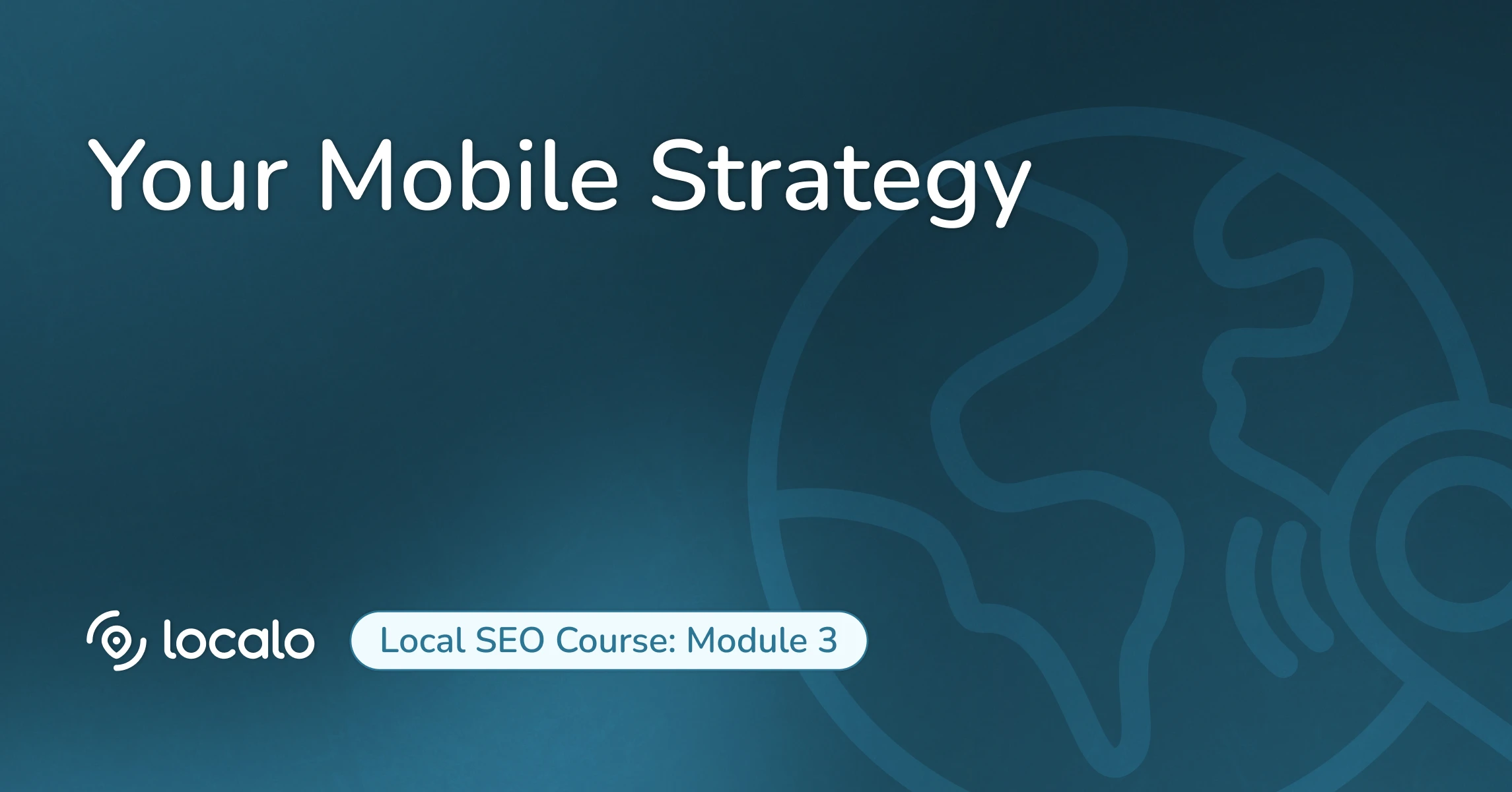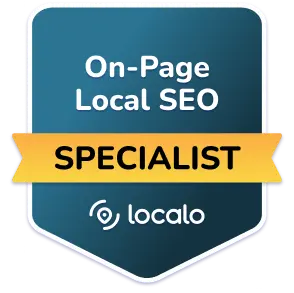Here’s a reality that might surprise you: the majority of local searches happen on mobile devices, and that number keeps growing. When someone searches for “plumber” while standing in their flooded basement, they’re definitely not using a desktop computer.
For local businesses, mobile optimization isn’t just nice to have, it’s absolutely essential. Google even uses mobile-first indexing, which means they look at the mobile version of your site first when deciding how to rank you.
The Mobile-First Reality Check
Think about how your customers actually search for local businesses. They’re often:
- Dealing with an urgent problem (broken pipe, car won’t start, toothache)
- On the go (looking for a restaurant while driving)
- Comparing options quickly (standing outside competing shops)
This means your mobile experience needs to be lightning-fast and crystal clear.
Mobile Optimization Basics That Matter
Page Speed is Everything
Your website should load quickly on mobile devices. Why? Because local searchers are impatient and they have problems to solve. Google provides a free PageSpeed Insights tool that shows exactly how your pages perform on mobile.
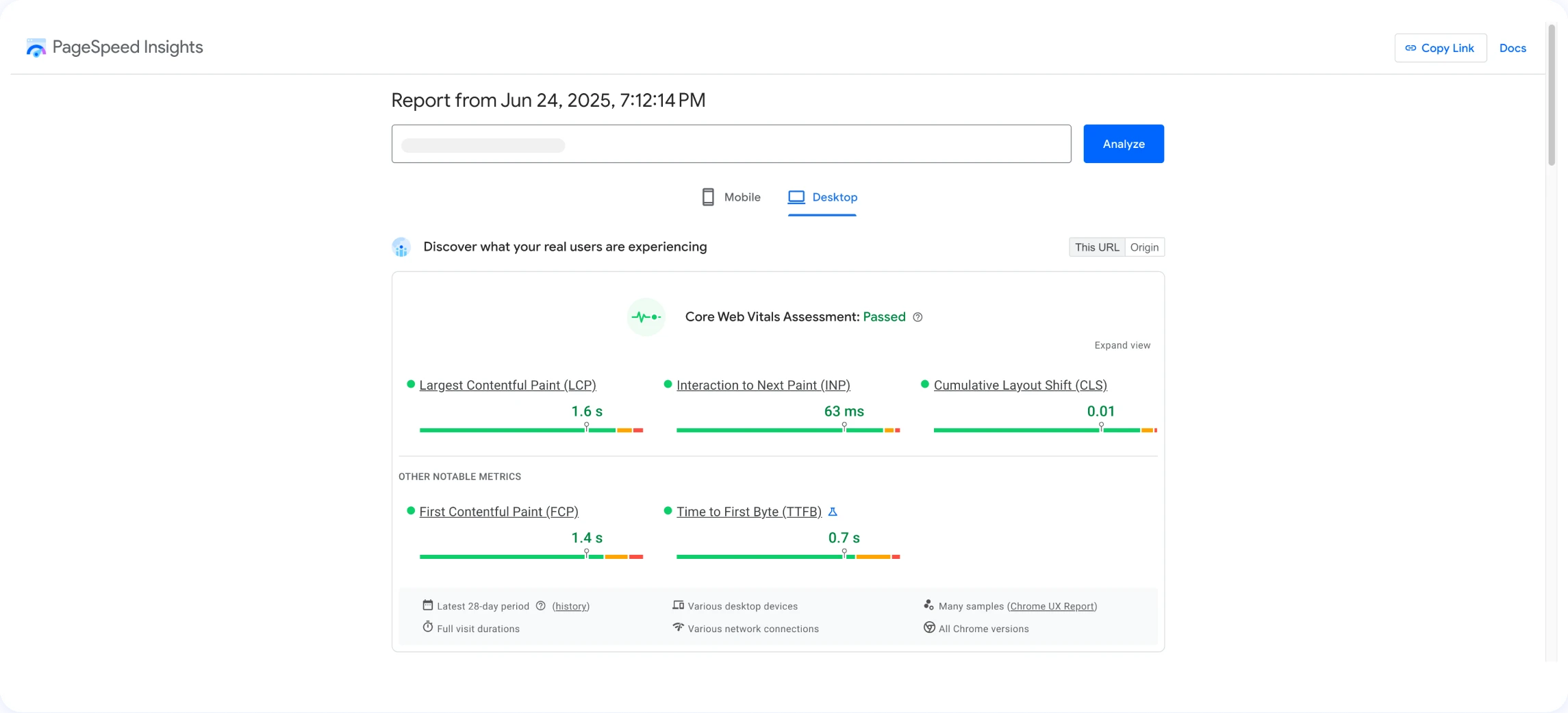
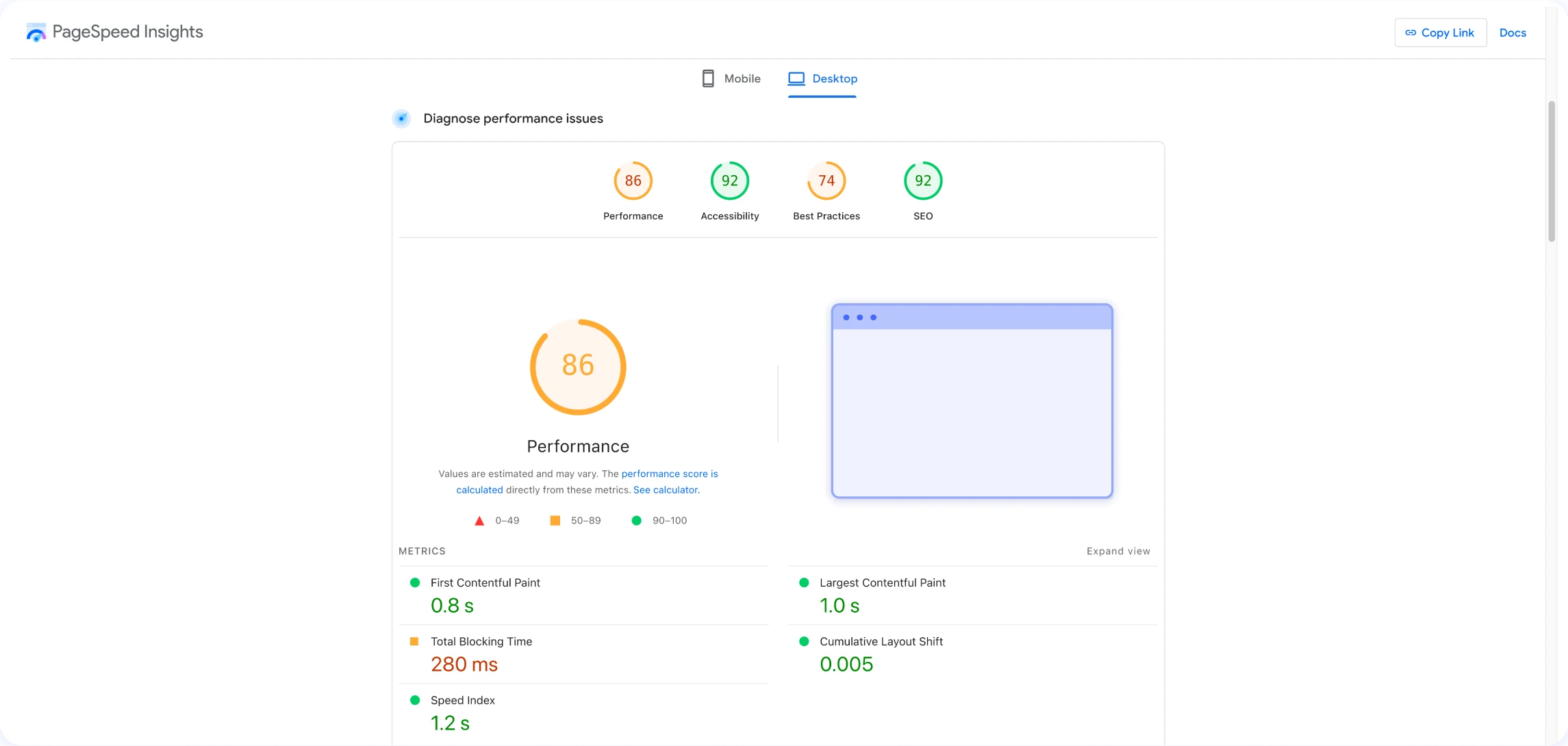
Click-to-Call is Gold
Make your phone number prominently displayed and clickable. When someone finds your business on their phone, they should be able to call you with one tap. This isn’t just convenient. It’s often how emergency service calls happen.
Thumb-Friendly Navigation
Buttons and links should be large enough to tap easily. If someone has to zoom in to click your “Contact Us” button, you’re losing customers to competitors with better mobile experiences.
Local Information Upfront
Put your address, hours, and phone number where mobile users can see them immediately. Don’t make them hunt through multiple pages to find basic information.
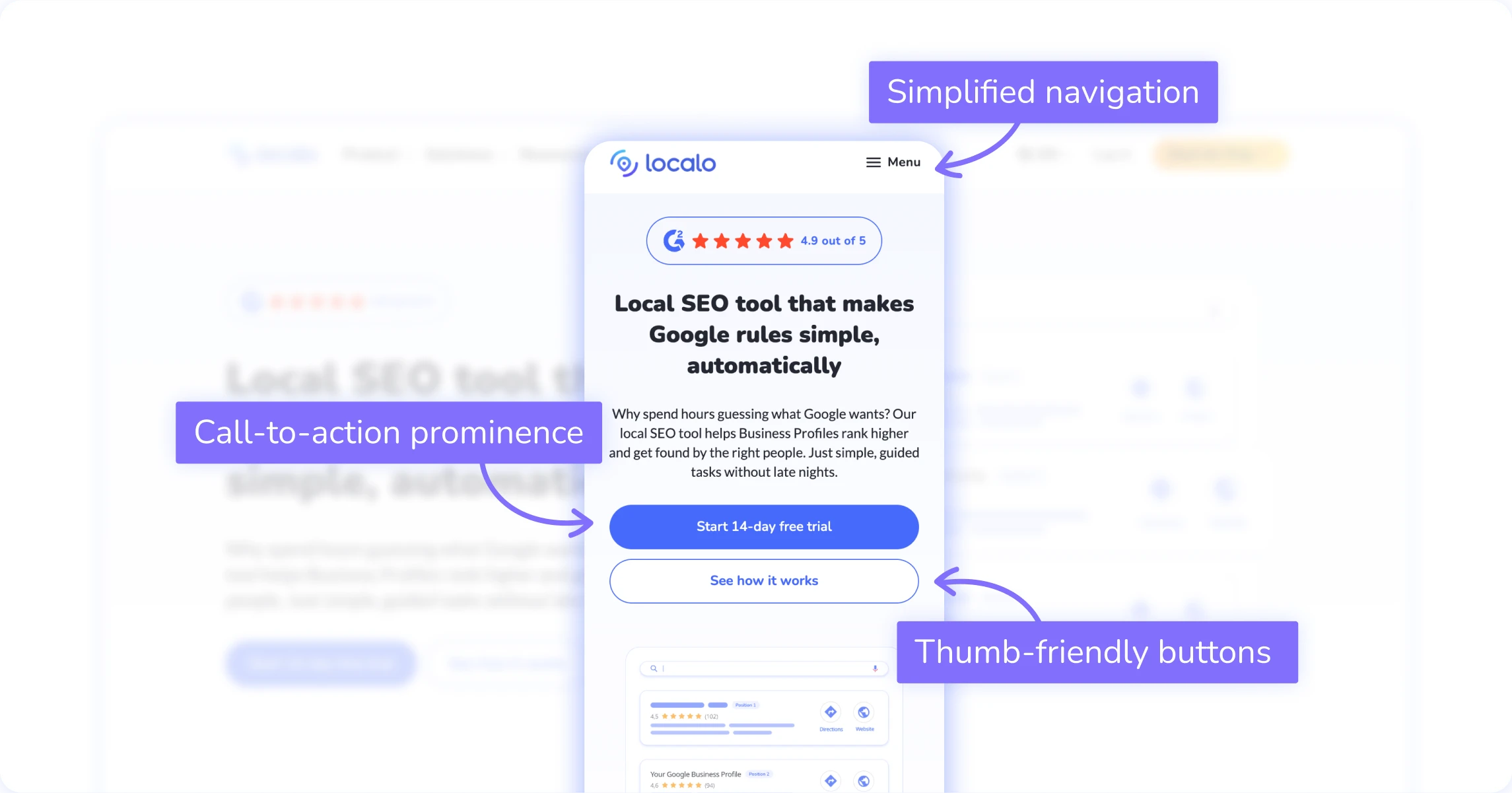
Quick Mobile Check
Here’s a simple test: grab your phone and search for your business. Can you:
- Find your phone number within seconds?
- Read your services without zooming in?
- Navigate to your contact page in just a few taps?
- Load your homepage quickly?
If any answer is no, you’ve found your next optimization priority.
Pro Tip: Most local emergencies happen outside business hours, and people search on mobile. If your mobile site doesn’t work perfectly, you’re missing out on your most valuable customers.
Hey there! Welcome back to our Complete Local SEO Course!
Your internal linking is guiding visitors perfectly - you’re doing some amazing work! Now let’s make sure your mobile experience is absolutely flawless. Today we’re diving into mobile optimization, and here’s a reality that might surprise you - the majority of local searches happen on mobile devices, and that number keeps growing every single day.
No complicated tech setup needed here - just smart mobile strategy that works. Because here’s what’s happening - when people have urgent local needs, they’re almost always on their phones, and if your site doesn’t work perfectly on mobile, you’re losing customers to competitors who figured this out.
What’s the mobile-first reality for local businesses?
When someone searches for “plumber” while standing in their flooded basement, they’re definitely not using a desktop computer. When someone’s car breaks down on the highway, they’re not going home to search on their laptop. Local emergencies happen when people are mobile, and they need solutions immediately.
For local businesses, mobile optimization isn’t just nice to have - it’s absolutely essential for survival. Google even uses mobile-first indexing, which means they look at the mobile version of your site first when deciding how to rank you. If your mobile site is terrible, your rankings will suffer everywhere.
Think about this - Google made this change because they recognized that most people search on mobile devices first. They’re essentially saying “if you can’t serve mobile users well, we’re not going to recommend you to anyone.”
How do customers actually search for local businesses on mobile?
Think about how your customers actually search for local businesses, and you’ll understand why mobile optimization is so critical.
They’re often dealing with an urgent problem - broken pipe, car won’t start, toothache, locked out of their house. These aren’t planned, leisurely shopping experiences. These are “I need help right now” situations where every second counts.
They’re on the go - looking for a restaurant while driving, searching for a gas station while traveling, finding a hotel while standing at the airport. They need information quickly and they need to be able to act on it immediately.
Or they’re comparing options quickly - standing outside competing shops, sitting in their car in a parking lot, walking down a street full of restaurants. They’re making real-time decisions based on what they can find and understand quickly on their phones.
This means your mobile experience needs to be lightning-fast and crystal clear. If they have to pinch and zoom to read your phone number, or if your site takes ten seconds to load, they’re calling your competitor instead.
What mobile optimization basics actually matter?
Let me break down the mobile optimization basics that actually impact your business, not just technical metrics that sound impressive.
Page speed is everything. Your website should load quickly on mobile devices. Why? Because local searchers are impatient and they have urgent problems to solve. Think about someone searching for an emergency locksmith at midnight - they’re not going to wait around for your site to load. Google provides a free PageSpeed Insights tool that shows exactly how your pages perform on mobile, and you could be aiming for under three seconds.
Click-to-call is pure gold for local businesses. Make your phone number prominently displayed and clickable. When someone finds your business on their phone, they should be able to call you with one tap. This isn’t just convenient - it’s often how emergency service calls happen. Someone finds you, taps your number, and becomes a customer in under 30 seconds.
Thumb-friendly navigation matters more than you think. Buttons and links should be large enough to tap easily with a thumb, not a precise stylus. If someone has to zoom in to click on “Contact Us” or use both hands to tap a single button, you’re creating unnecessary friction. And frustrated mobile users don’t become customers.
Local information upfront is crucial for mobile users. Put your address, hours, and phone number where mobile users can see them immediately without scrolling or searching. Don’t make them hunt through multiple pages to find basic information like whether you’re open or how to reach you.
What does the quick mobile check reveal?
Here’s a simple test that reveals everything about your mobile experience - grab your phone and search for your business as if you were a customer with an urgent problem.
Can you find your phone number within seconds? If someone needs emergency service, they shouldn’t have to hunt around your site to figure out how to call you.
Can you read your services without zooming in? If your text is too small to read comfortably, people will leave and find a competitor with a better mobile experience.
Can you navigate to your contact page in just a few taps? Every extra tap is an opportunity for someone to get frustrated and leave.
Does your homepage load quickly? Time it - if it takes more than three to five seconds, you’re losing potential customers.
If any answer is no, you’ve found your next optimization priority. Fix these issues and you’ll immediately start capturing more mobile customers.
Pro tip - most local emergencies happen outside business hours, and people search on mobile. If your mobile site doesn’t work perfectly, you’re missing out on your most valuable customers - people who need help immediately and are willing to pay premium prices for fast service.
Think about it - emergency plumbers, 24-hour locksmiths, urgent care clinics, emergency dentists. These businesses charge premium rates because they solve urgent problems. But if their mobile sites don’t work well, they’re invisible when people need them most.
Excellent! Your mobile optimization is now set up for success. In our final video, we’re putting together your complete action plan and reviewing the key takeaways that will transform your website into a local customer magnet. We’ll give you specific tasks you can complete this week to start seeing results. Thanks for joining me today, and I’ll see you in the next video!
The websites and Google Business Profiles used throughout the course are for educational purposes only. We're not affiliated with these businesses and don't claim any endorsement from them. All trademarks belong to their owners. Some examples include visual changes (made with browser tools) to help illustrate the SEO concepts we're teaching. These edits are strictly local and illustrative of specific SEO concepts. They don't affect the original websites.
